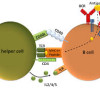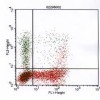Bloodstream infections in pediatric oncology outpatients: a new healthcare systems challenge
Abstract
OBJECTIVE: To investigate a perceived increase in central venous catheter (CVC)-associated bloodstream infections (BSIs) among pediatric hematology-oncology outpatients.
DESIGN: A case-control study.
SETTING: A pediatric hematology-oncology outpatient clinic at Fresno Children’s Hospital.
PATIENTS: Pediatric hematology-oncology clinic outpatients with CVCs at Fresno Children’s Hospital between November 1994 and October 1997.… Read more





